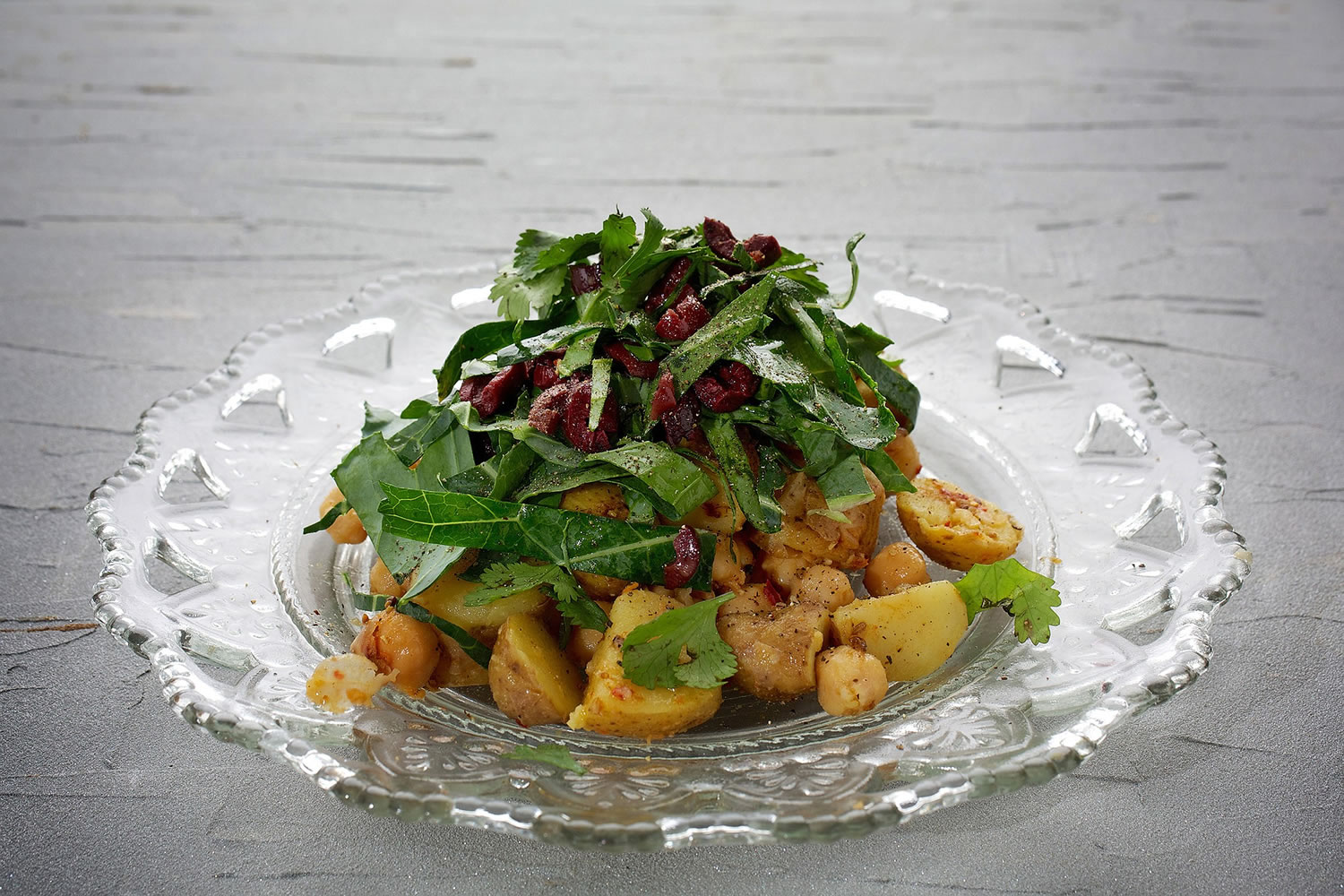Cabbage is sweet, creamy-tasting and crunchy when raw; buttery-tasting, earthy and unctuous when cooked. For salads, look to savoy and Napa varieties, whose ruffly leaves keep a tight hold on dressings and retain their texture even as they wilt. (Napa, with its high water content, tends to slump more quickly.) Or cook any variety — slowly, in a little oil with a few tablespoons of water — to concentrate its flavors and keep its leaves plump.
Collard greens, like most winter vegetables, produce more sugars after they’ve been nipped with frost. Finely shred the leaves for salads or coleslaw, or use whole leaves as a wrap. Alternatively, steam the shredded leaves just until tender, drain, and gloss them with a sharp, garlicky dressing. Cooked, collards become tender and succulent. Very fresh, young leaves need no more than a few minutes on the stove; more mature leaves should cook a little longer, and more slowly.
Chicories — radicchio, catalogna chicory, curly endive or frisee, sugarloaf chicory and escarole — have sweet, lettucelike leaves tinged with a compelling bitterness. In salads, their complex flavor is best matched with sharp vinaigrettes and citrus-based dressings. Adding them to brothy soups or braising them lightly cuts their bitterness by half, renders them silky and tender, and brings out an earthy richness. A compromise: Remove the outer leaves for cooking and reserve the more delicate inner leaves for salad.
Kale usually has deeply colored leaves that are mild and sweet, but there’s enough variation among varieties that it’s worth trying them all. Lacinato (also called Tuscan kale or cavolo nero) has crinkly, tender, almost black leaves, ideal for salads; ruffly redbor, its sturdy greens a purplish-rose, is a good choice for soups and stews. For sauteing, try any of the Siberian or Russian kales, whose large, fine-grained leaves wilt quickly into meltingly tender heaps.



